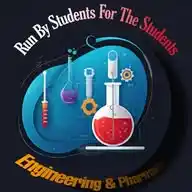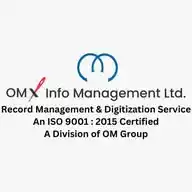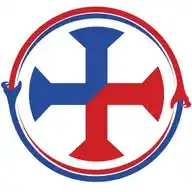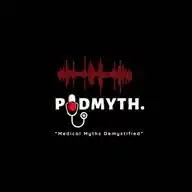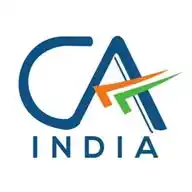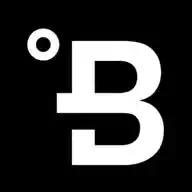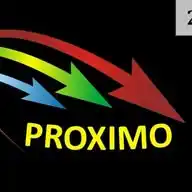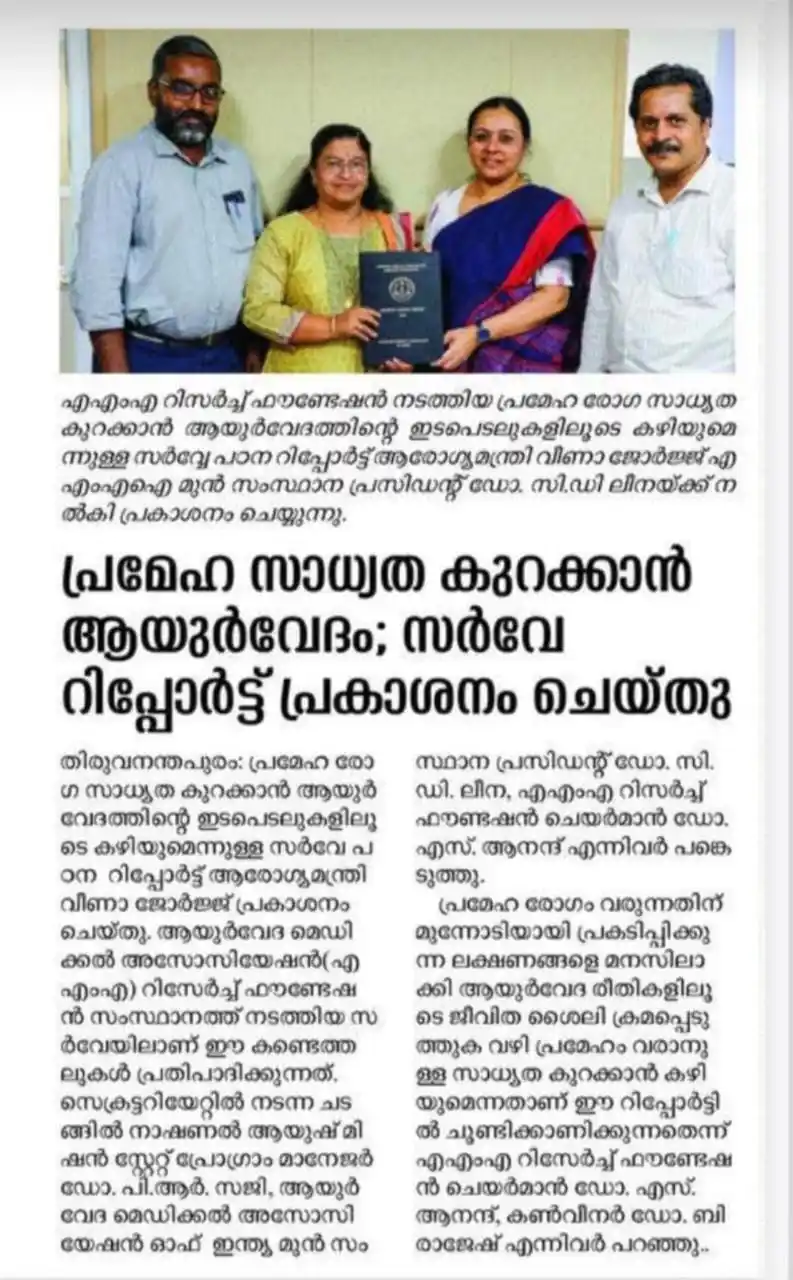BAMS UPDATES
11.8K subscribers
About BAMS UPDATES
LEAD BY D'VAKASO PVT LTD | Medical services company | [For BAMS students & doctors] 25,000+ doctors trust our medical services dvakaso.com FOR MORE INFO, ANY COLLABORATION, OR TO POST VACANCIES, DM 9074247488 DR SONU KAILAS | BAMS | AYURJOB | AYURVEDA #ayurvedavacancies #ayush #ayurvedajobs #ayurveda
Similar Channels
Swipe to see more
Posts
🔺CASE STUDY : NO 41 🔺PART NO : 02 🔺HIKKA ( HICCUPS ) 🔺 DIFFERENTIAL DIAGNOSIS Modern Differential Diagnoses • GERD • Peptic ulcer • Pleuritis / Lower lobe pneumonia • Phrenic nerve irritation • CNS lesions (stroke, tumor) • Uremia • Psychogenic • Post-operative 🔺 SAMPRAPTI (PATHOGENESIS) -Obstruction or vitiation of Udana Vayu -Causes spasmodic contractions in the chest -Results in upward movement of air, producing hiccup(Reference: Ashtanga Hridaya Nidana Sthana 6/3) 🔺 UPASHAYA & ANUPASHAYA (PALLIATIVE & NON-PALLIATIVE FACTORS) 📌Upashaya: -Warm gruels and soups -Sneha (unctuous substances like ghee) -Warm water -Nasya and Dhumapana (herbal smoking) 📌Anupashaya: -Cold, dry, rough, heavy food -Talking during meals -Exposure to wind 🔺 SAMANYA CHIKITSA (GENERAL TREATMENT) -Langhana (fasting) -Snehana, Swedana -Mild Vamana in Kaphaja Hikka -Avoid causative factors -Palliative herbs (Pippali, Haritaki, Shunthi)Reference: Charaka Samhita Chikitsa Sthana 18/18-22 🔺 VISHESHA CHIKITSA (SPECIFIC TREATMENT) -Dashamoola Kwatha: for Vata-Kapha Hikka -Pippalyadi Yoga (Pippali, Shunthi, Haritaki) -Haritakyadi Churna: carminative, digestive -Anuvasana Basti: for chronic and Vataja Hikka -Nasya and Dhumapana: for Kapha dominance -Takra Siddha with Saindhava Lavana (buttermilk with rock salt) -Yashtimadhu (Licorice root):1–2 grams powder, twice daily Soothes the throat, balances Vata -Ginger (Shunthi) :250–500 mg powder or fresh juice -Pippali (Long pepper) :250–500 mg -Clove (Lavanga):1–2 cloves to chew or decoction -Dashamoola decoction :15–30 ml twice daily -Sitopaladi churna :1–3 grams with honey Good for hiccups from cold or cough -Trikatu churna (Pippali, Black pepper, Dry ginger):250–500 mg with warm water -Bharangi (Clerodendrum):Juice or decoction(REF AH: CHIKTSA 6/ 15 - 25, CHARAKA CHI, 18) 🛑https://chat.whatsapp.com/JtHGdxv7A5SA9bAe8ZNIS2
🔺CASE STUDY : NO 41 🔺PART NO : 01 🔺HIKKA ( HICCUPS ) 🔺 NIDANAM (CAUSES) -Excessive water intake -Overeating -Dry food intake -Suppression of natural urges -Exposure to cold air -Heavy, oily food Reference: Ashtanga Hridaya Nidana Sthana 6/4-5 🔺POORVA ROOPAM (PRODROMAL SYMPTOMS) -Cough -Throat constriction -Itching in throat -Excess salivation -Alteration in voice Reference: Ashtanga Hridaya Nidana Sthana 6/6 🔺 LAKSHANAM (SYMPTOMS) -Common symptoms: -Sudden hiccups with sound -Pain in chest/flank -Difficulty in speaking or breathing(Reference: Charaka Samhita Chikitsa Sthana 18/1–7) 🔺 SYSTEMIC EXAMINATION 📌Hiccups lasting >48 hours are termed persistent; >2 months are intractable. 📌General Examination -Observe frequency, duration, and triggers -Assess nutritional status (may be affected if chronic) -Check for respiratory distress, dehydration, or electrolyte imbalance 📌 CNS Examination -To Rule out - Brainstem lesions - Increased intracranial pressure -Stroke (especially medulla) - MS or meningitis 📌Respiratory System - Look for: -Infections (pharyngitis, bronchitis, pneumonia) -Pleural effusion -Diaphragmatic irritation 📌 Cardiovascular System -Assess for: -Pericarditis - Myocardial infarction (especially inferior wall) 📌Gastrointestinal System - Check for: -Gastric distention - GERD - Peptic ulcer - Esophagitis -Hiatal hernia 📌ENT & Neck -Look for: - Pharyngitis - Foreign body -Tumors compressing phrenic/vagus nerves 🔺 LABORATORY INVESTIGATIONS -Basic Blood Work CBC: To detect infection or anemia -ESR/CRP: For inflammation or malignancy - Liver Function Tests: For hepatic causes - Renal Function Tests: To rule out uremia - Electrolytes: Check for: Hyponatremia,Hypocalcemia,Hypokalemia (can trigger hiccups) - Imaging Chest X-Ray: To detect pneumonia, pleural effusion, mediastinal mass, or cardiomegaly - CT/MRI Brain: For CNS lesions (stroke, tumor) -Abdominal Ultrasound: For liver, gallbladder, stomach issues - Barium swallow / Endoscopy: For GERD, ulcer, or hiatal hernia -ECG To rule out myocardial infarction - Laryngoscopy To assess pharynx, larynx, and vocal cords if ENT involvement is suspected 🛑https://chat.whatsapp.com/JtHGdxv7A5SA9bAe8ZNIS2
Urgently required regular faculty for following subject for immediate joining - College Name: ARAC&H, Sangamner, Maharashtra *Assistant professor*- *Kriya Sharir* ( *with or without Teacher code , We can guide for the upcoming NTET exam*) Our College is completing 25yrs and Providing regular monthly and Good salary with accommodation @Sangamner, Maharashtra Contact 9920124248 🛑🛑🛑🛑 dvakaso.com 🔗 Join our WhatsApp Community: https://chat.whatsapp.com/KaFRr5wAxg1L8aIQTVqc8g
🔺CASE STUDY: NO 42 🔺 PART NO : 1 🔺 ARDITA (BELL'S PALSY) 🔺 Nidanam (Etiology/Causative Factors) of Ardita -Vata prakopaka hetus: -Exposure to cold wind -Suppression of natural urges -Excessive talking, shouting -Injury to the nerves or trauma to the face/head -Emotional stress References: Charaka Samhita Chikitsa Sthana 28/41, Sushruta Samhita Nidana Sthana 1/64 🔺 Purvaroopam (Prodromal Symptoms) -Mild tingling or numbness of one side of the face -Slight drooping of the mouth or eyelid -Difficulty in speech or articulation -Stiffness or discomfort in the jaw/neck region(Reference: Ashtanga Hridaya Nidana Sthana 15/6) 🔺 Lakshanam (Symptoms/Clinical Features) -Sudden deviation or distortion of one side of the face -Inability to close one eye or move facial muscles on the affected side -Difficulty in speech, chewing, or blowing -Loss of facial expressions on the affected side -Often unilateral (ardha-mukha vikara)References:Charaka Samhita Chikitsa Sthana 28/41-42,Ashtanga Hridaya Nidana Sthana 15/4 🔺 SYSTEMIC EXAMINATION 📌 General Examination -Facial asymmetry at rest and during movement (e.g., smiling, eye closure) -Deviation of mouth to unaffected side -Incomplete closure of the eye (lagophthalmos) -Drooling from affected side -Loss of nasolabial fold -Inability to puff cheeks or raise eyebrows (LMN type) Neurological Examination -Cranial Nerve VII (Facial Nerve): Weakness of facial muscles on one side (LMN lesion) -Taste sensation loss (anterior 2/3 of tongue) -Hyperacusis (if stapedius affected) -Assessment of corneal reflex (afferent V, efferent VII) -Rule out other cranial nerve involvement (to assess for brainstem lesion) ENT Examination -Otoscopy to rule out otitis media, cholesteatoma, or herpes zoster oticus (Ramsay Hunt Syndrome) 🔺 LAB INVESTIGATIONS Routine Tests -CBC, ESR: Rule out systemic infection/inflammation -Blood sugar (FBS, PPBS): To rule out diabetic neuropathy -Serum B12 and folate levels Specific Investigations -MRI Brain + Internal Acoustic Meatus: -Rule out stroke, multiple sclerosis, acoustic neuroma, tumors -CT Temporal Bone: If trauma or fracture suspected Electroneurography (ENoG) or Electromyography (EMG): -Assess degree of nerve damage and prognosis Viral markers: -HSV, VZV if viral etiology suspected (Ramsay Hunt Syndrome) -Lyme serology: In endemic areas 🛑https://chat.whatsapp.com/JtHGdxv7A5SA9bAe8ZNIS2
🛑🛑🛑🛑 dvakaso.com 🔗 Join our WhatsApp Community: https://chat.whatsapp.com/KaFRr5wAxg1L8aIQTVqc8g
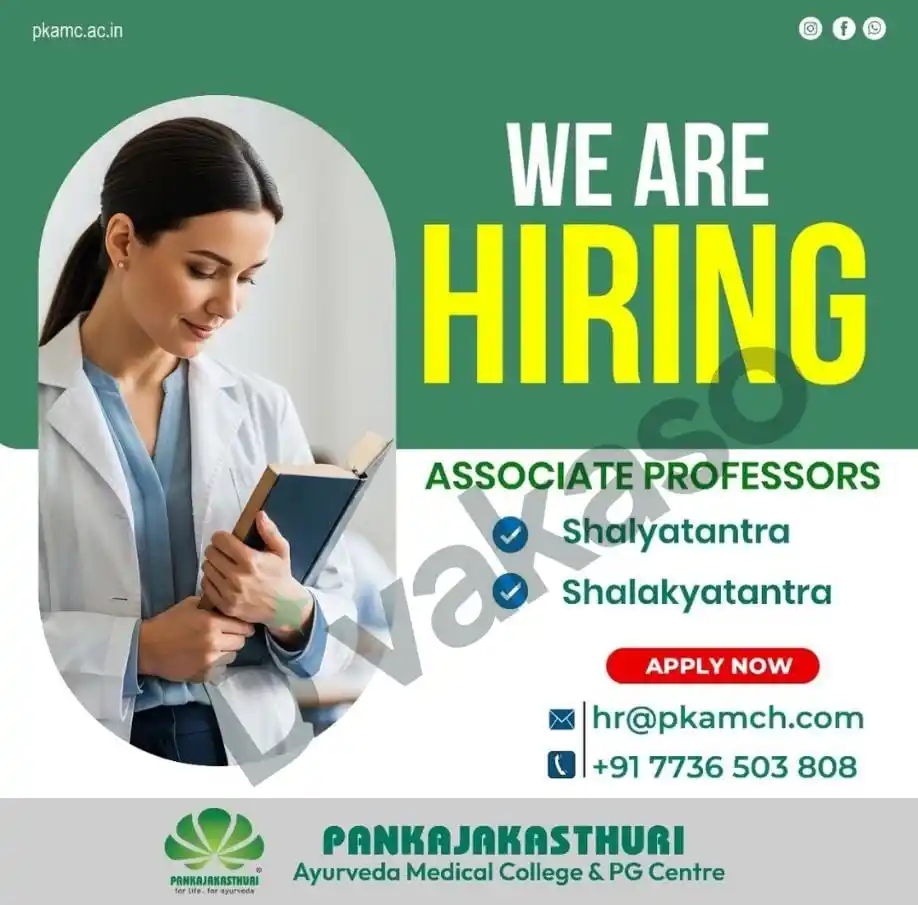
*RACHANA🔥* *As per multiple requests, we’ve added 5 additional seats!* 📞 To reserve your spot, contact: +91 9074247488
🔺CASE STUDY: NO 38 🔺PART NO : 2 🔺PAKSHAGHATA / PAKSHAVADHA (STROKE / HEMIPLEGIA) 🔺 DIFFERENTIAL DIAGNOSIS (MODERN CLINICAL ASPECT) • Transient Ischemic Attack (TIA) • Brain tumor • Seizure disorder with postictal paralysis • Multiple sclerosis • Hypoglycemia or diabetic ketoacidosis (DKA) • Bell’s palsy (facial nerve palsy) • Migraine with hemiplegic symptoms • Peripheral neuropathy (may present with one-sided numbness) 🔺SAMPRAPTI (PATHOGENESIS) • Vitiated Vata, especially Vata-Pitta dosha imbalance, causes blockage or rupture of blood vessels, leading to poor circulation and oxygen supply to the brain • Impaired circulation in the brain leads to brain cell death and symptoms of hemiplegia, aphasia, and paralysis • The condition worsens if not addressed promptly due to aggravated Vata affecting motor and sensory functions(Ref: Charaka Samhita, Sutra Sthana 17/9-10; Ashtanga Hridaya, Sutra Sthana 5/6-7) 🔺UPASAYA AND ANUPASAYA (PALLIATIVE & AGGRAVATING FACTORS) Upasaya: • Consuming light, warm, and easily digestible food (e.g., porridge, soups) • Warm oil massages (e.g., sesame or medicated oils) to balance Vata and improve circulation • Nasya therapy with Anu Taila to pacify Vata dosha • Use of herbs such as Ashwagandha, Shatavari, and Brahmi to support brain function and calm Vata • Stress management techniques like meditation, yoga, and breathing exercises Anupasaya: • Exposure to cold and dry environments that aggravate Vata • Overexertion or excessive physical strain, especially after a stroke • Mental stress, anger, and anxiety • Excessive consumption of dry and rough foods that aggravate Vata • Alcohol and tobacco use(Ref: Charaka Samhita, Sutra Sthana 17/12-13; Ashtanga Hridaya, Sutra Sthana 5/8-9) 🔺SAMANYA CHIKITSA (GENERAL LINE OF TREATMENT) • Immediate management of stroke with the restoration of blood flow (medications or surgery as indicated) • Administration of Vata-pacifying drugs (e.g., Dashamoola, Ashwagandha) • Dietary modifications to support the body, focusing on nourishing, warm, and grounding foods • Maintaining proper hydration and electrolyte balance • Regular physical therapy to improve motor function and prevent complications from immobility • Encourage mental calmness and emotional stability through counseling or stress-reducing practices(Ref: Charaka Samhita, Sutra Sthana 17/14-16; Ashtanga Hridaya, Sutra Sthana 5/10-11) 🔺VISHESHA CHIKITSA (SPECIFIC TREATMENT) 1. For Vata-Pitta Type Stroke (Hemorrhagic Stroke): o Virechana with Dashamoola or Trivrit o Medicated oils like Maha Narayana Oil for external application and massage o Use of Shirodhara with Brahmi or Ashwagandha oil for mental clarity 2. For Vata-Kapha Type Stroke (Ischemic Stroke): o Nasya therapy with Anu Taila o Shadbindu Taila in the nasal passages to clear blockages o Use of Brahmi Rasayana to support cognitive function 3. For Aphasia or Speech Issues: o Use of Shatavari and Yashtimadhu for speech improvement o Vata-pacifying diet and therapies to restore mental clarity 4. For Paralysis and Motor Issues: o Regular physiotherapy exercises along with Vata-pacifying therapies o External application of oils like Mahanarayan Taila or Bala Ashwagandha Taila Specific Yogas: • Ashwagandha Rasayana • Brahmi Rasayana • Dashamoola Kvatha • Mahanarayan Taila for massage(Ref: Charaka Samhita, Sutra Sthana 17; Ashtanga Hridaya, Sutra Sthana 5) 🛑https://chat.whatsapp.com/JtHGdxv7A5SA9bAe8ZNIS2
